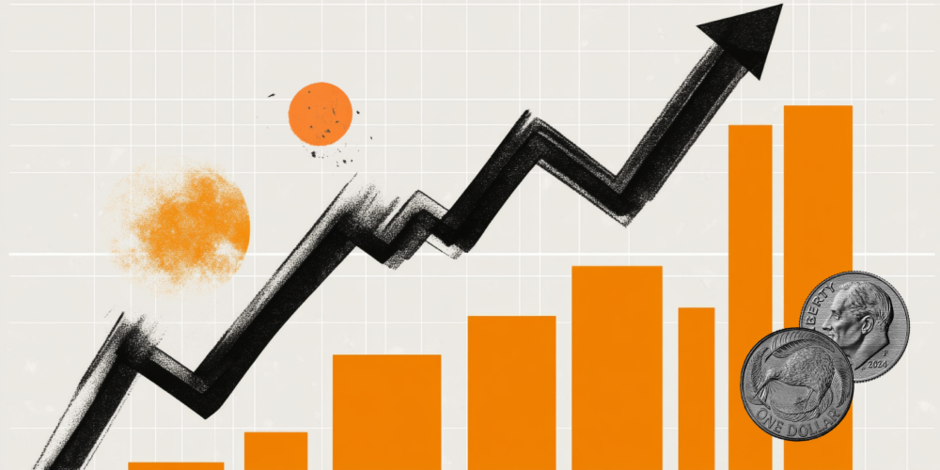NZD/USD holds gains above 0.5600 despite a market caution ahead of Trump’s inauguration
- NZD/USD remains stronger despite a cautious mood ahead of President-elect Donald Trump’s inauguration on Monday.
- Traders adopt caution amid uncertainty surrounding Trump’s policy pledges, including imposing tariffs and extending tax cuts.
- The PBoC maintained its one- and five-year Loan Prime Rates at 3.10% and 3.60%, respectively.

The NZD/USD pair pauses its two-day losing streak, trading around 0.5610 during the Asian hours on Monday. This upside of the pair is attributed to the subdued US Dollar (USD) amid cautious market sentiment ahead of President-elect Donald Trump’s inauguration later in the day. Additionally, US markets will remain closed on Monday in observance of Martin Luther King Jr. Day.
The US Dollar Index (DXY), which tracks the performance of the USD against six major currencies, hovers around 109.10 at the time of writing. Despite this, the Greenback finds some support as US Treasury yields rise, fueled by concerns over Trump’s proposed policies, including potential tariffs, extended tax cuts, and stricter immigration measures. Analysts suggest that the Federal Reserve’s (Fed) future interest rate decisions may hinge on how aggressively these policies are implemented.
Market participants will closely monitor Trump’s anticipated executive orders, expected to follow shortly after he takes office. Meanwhile, the Fed is widely expected to maintain current interest rates at its January meeting, with most economists surveyed by Reuters predicting a resumption of rate hikes in March.
The People’s Bank of China (PBOC) announced on Monday that it would keep its Loan Prime Rates (LPRs) unchanged. The one-year Loan Prime Rate (LPR) remains at 3.10%, while the five-year LPR stands at 3.60%. Since China and New Zealand are close trading partners, any shifts in China’s economy could have an impact on Antipodean markets.
The NZD also gained ground due to the robust economic data from China. China’s Gross Domestic Product (GDP) grew 5.4% over the year in the fourth quarter of 2024 after reporting a 4.6% expansion in the third quarter. Data beat the market consensus of 5% in the reported period, by a wide margin. Additionally, the annual December Retail Sales increased by 3.7% vs. the 3.5% expected and 3.0% prior, while Industrial Production arrived at 6.2% vs. the 5.4% forecast and November’s 5.4%.
New Zealand Dollar FAQs
The New Zealand Dollar (NZD), also known as the Kiwi, is a well-known traded currency among investors. Its value is broadly determined by the health of the New Zealand economy and the country’s central bank policy. Still, there are some unique particularities that also can make NZD move. The performance of the Chinese economy tends to move the Kiwi because China is New Zealand’s biggest trading partner. Bad news for the Chinese economy likely means less New Zealand exports to the country, hitting the economy and thus its currency. Another factor moving NZD is dairy prices as the dairy industry is New Zealand’s main export. High dairy prices boost export income, contributing positively to the economy and thus to the NZD.
The Reserve Bank of New Zealand (RBNZ) aims to achieve and maintain an inflation rate between 1% and 3% over the medium term, with a focus to keep it near the 2% mid-point. To this end, the bank sets an appropriate level of interest rates. When inflation is too high, the RBNZ will increase interest rates to cool the economy, but the move will also make bond yields higher, increasing investors’ appeal to invest in the country and thus boosting NZD. On the contrary, lower interest rates tend to weaken NZD. The so-called rate differential, or how rates in New Zealand are or are expected to be compared to the ones set by the US Federal Reserve, can also play a key role in moving the NZD/USD pair.
Macroeconomic data releases in New Zealand are key to assess the state of the economy and can impact the New Zealand Dollar’s (NZD) valuation. A strong economy, based on high economic growth, low unemployment and high confidence is good for NZD. High economic growth attracts foreign investment and may encourage the Reserve Bank of New Zealand to increase interest rates, if this economic strength comes together with elevated inflation. Conversely, if economic data is weak, NZD is likely to depreciate.
The New Zealand Dollar (NZD) tends to strengthen during risk-on periods, or when investors perceive that broader market risks are low and are optimistic about growth. This tends to lead to a more favorable outlook for commodities and so-called ‘commodity currencies’ such as the Kiwi. Conversely, NZD tends to weaken at times of market turbulence or economic uncertainty as investors tend to sell higher-risk assets and flee to the more-stable safe havens.
Author

Akhtar Faruqui
FXStreet
Akhtar Faruqui is a Forex Analyst based in New Delhi, India. With a keen eye for market trends and a passion for dissecting complex financial dynamics, he is dedicated to delivering accurate and insightful Forex news and analysis.

















